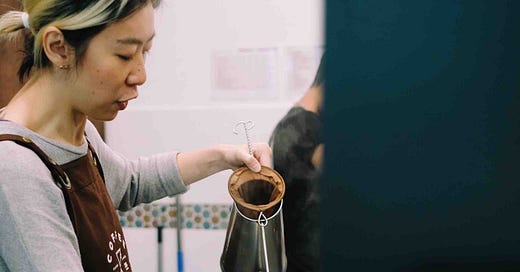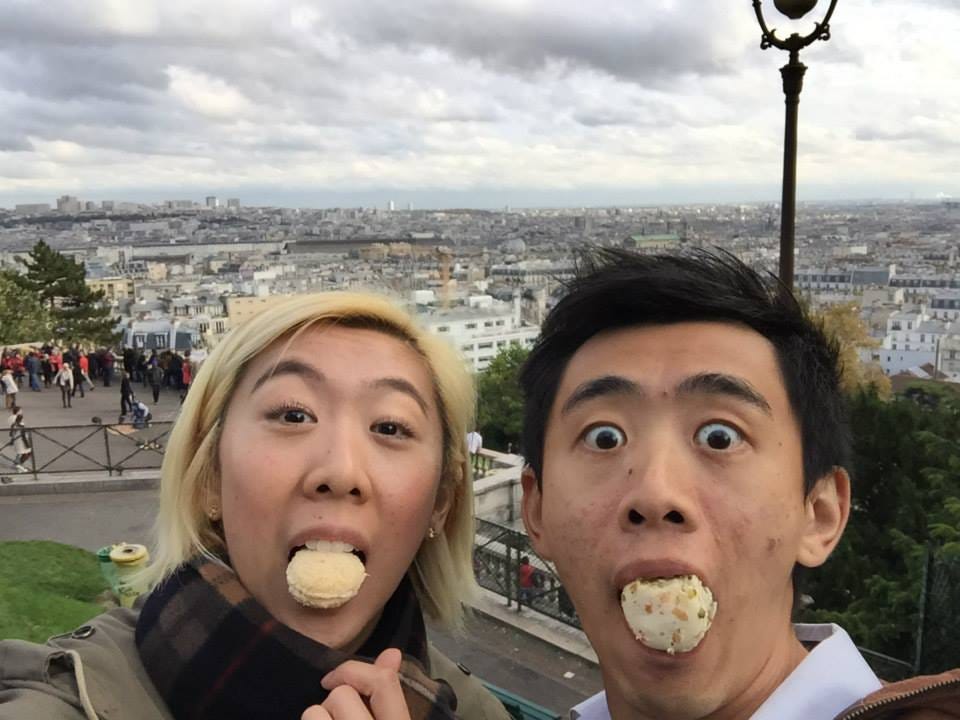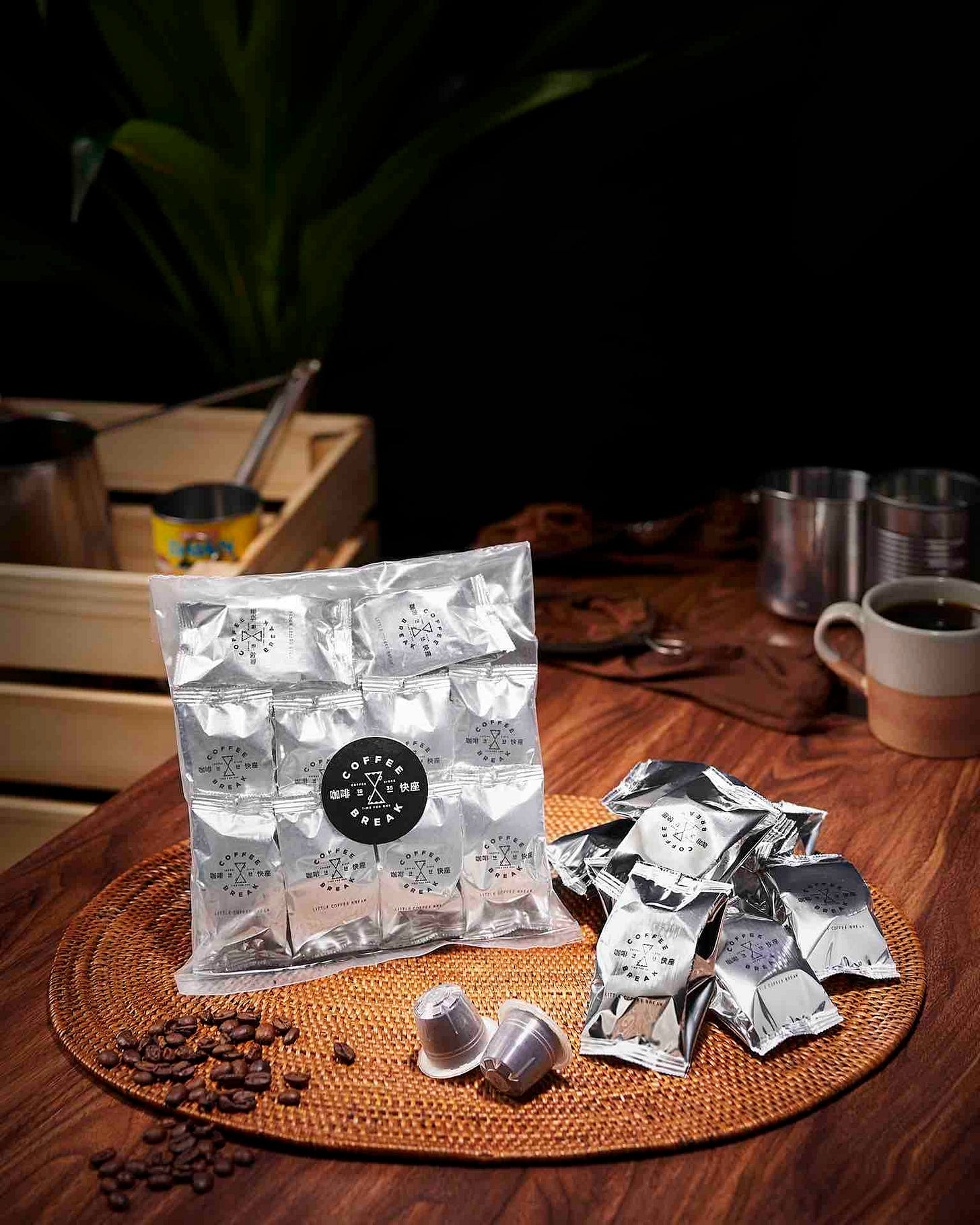Kopi for keeps
With Faye Sai and Coffee Break, you'll never look at coffee the same way again
The first time I came across Coffee Break and their drinks and products, I found them so intriguing that I wanted to try all of them. (I think you will, too.)
Originally established in 1935 and named Coffee Break in 1999, Coffee Break is a family-owned and run coffee business in Singapore with outlets in Amoy Street Food Centre and Hong Lim Food Centre. They source Robusta beans from around the region, and prepare and roast them the traditional Nanyang way.
Let’s see: Have the traditional kopi and teh now, and then their SHY Blend Coffee Powder and Tea Dust, Coffee Break Cafe Latte, Mocha, Milk Tea and Chocolate (No Sugar) Mixes later…
Where do we even begin?
Well, maybe we can ask Faye Sai, Coffee Break’s business development manager, for tips and some coffee wisdom.
“When drinking coffee anywhere in the world, it is always best to drink it in its original state”
Faye Sai, business development manager of Coffee Break, Singapore
Faye’s recommendations
• Coffee Break’s SHY Blend
• Kopi gao siew dai gah c
• Kopi-c siew siew dai
(What’s kopi? Click here.)
Which of your coffees would we find in your kitchen or pantry?
Faye: “You’d definitely find our house mix, the SHY Blend, on my coffee shelf. It is strong and thick, a unique blend that we are very proud of, and my morning drink. I will also stock espresso roasts by local Singaporean roasters, as my husband and I enjoy pulling shots on our Rocket Espresso Appartamento, and savour them during mid-afternoon tea breaks.”
Which of your brews do you sip first thing in the morning?
“To kickstart my day, I will brew our SHY Blend and make a big cup of kopi gao siew dai gah c (word-for-word translation: coffee thick less sweet add evaporated milk). It is strong, with a creamy mouthfeel and full body that is not too sweet – my favourite way to drink our coffee. It helps to wake up my senses and gives my body a little caffeine kick, setting the tone for the day.”
And the last you sip for the day?
“Kopi-c siew siew dai (word-for-word translation: coffee with evaporated milk less less sugar). This concoction allows me to taste more of the bitterness of the coffee, while still allowing a sugar rush. Usually I need a cup of this at work to stay focused.”
What are some of the things about coffee that you feel have stayed true for you throughout the years?
“Coffee for me has always been a source of comfort, energy, and on a broader level, a great way to connect with people in the local community and even on a global scale, especially when meeting fellow coffee enthusiasts, or even just trying coffees from all over the world when I travel.”
What are your coffee habits? How have they changed, or even stayed the same?
“I definitely have my go-to coffee as above – but with the increasing availability of information about new coffees, brewing methods, roasting methods and the demands of an educated customer base, I have learnt to appreciate coffees of different varietals and different roasts, and even different signature coffees of different countries.”
How would you personally describe the Nanyang way of roasting, and the kind of brews it creates?
“The Nanyang way of roasting historically was to cater to the tastebuds of the hardworking labourers who were the first patrons of local kopi. In the modern sense, this method of roasting actually helps to create a very distinct heavy body, creamy mouthful, and slight bitterness that is not easily found elsewhere. Black, it is a jolt to wake the senses. White, it could be a dessert that excites your senses.”
How do you balance tradition with modern ways of doing coffee?
“We’ve retained tradition by insisting on the use of Robusta beans roasted the Nanyang way, coupled with brewing the way my grandfather and father did via the nylon ‘sock’. Our modernisation stems from the introduction of creative and bolder flavours paired with the traditional brews, as well as the adoption of technology at our stalls, and the employment of younger staff to inject new energy into an otherwise ‘sunset’ industry.”
What's the process of creating, experimenting, and serving your coffees and products like?
“Jack, my brother, is our R&D manager. Amongst the three of us, he has the most acute palate and is the most inventive with new flavours. Coupled with the fact that he is also the most well-travelled, he’s experienced much more colour, diversity and exotic foods and drinks, which he brings back to experiment with and recreate using our existing ingredients. We will taste-test it, and once we agree on the taste, we will let our regulars sample them. If the general feedback is positive, we usually introduce it as a new item for a trial period of time. The permanence of the novel item is determined by the frequency it’s ordered during the trial.”
What are your tips for us to best enjoy our coffee? (Especially those by Coffee Break.)
“I believe the best way to savour our coffee is to order both a traditional beverage and then the first flavour that catches your attention on our menu. We are proud of our traditional kopi and teh, and equally happy to share new flavours that would excite your senses as well.”
Has the pandemic changed the way you view and take your coffees?
“The pandemic, especially during the Circuit Breaker, was a crazy scramble for us trying to conquer the roads and make deliveries ourselves, as well as getting our website and online store up and running to meet the sudden increase in demand for online shopping. So to be honest, the pandemic has helped us evolve a lot faster than we would have liked. I think coffee has proven itself essential even in a pandemic, and we have been very humbled by it. I also don’t think we take our coffees any differently now, although we noticed that with our customers there has been a shift in an interest for cold brews, and people often mistake our bottled kopis for cold brew.”
Can you share with us some of your coffee musts, do's and don’ts?
“When drinking coffee anywhere in the world, it is always best to drink it in its original state, because that’s what the locals would be proud to share with you! Always try coffees in their natural state first, before adding in cream or sugar. If you like it, ask for more, and do find out more information about the coffee, and the owners will be very happy to share. Don’t shrug your nose and merely say, ‘This coffee is not good.' The coffee may just not appeal to you, but it may be gold to someone else. Maybe instead say, ‘This coffee may not be suitable for me, but thank you nonetheless.' I think with all crafts, the same can be applied.”
What are your current favourite coffees, and favourite coffees of all time?
“I think we will never tire of the richness, thickness, bitterness, and boost that only our local kopi can offer. Increasingly, with more home brewers, there has been a shift in brewing Arabica coffee at home with affordable equipment. It is great that while specialty coffee is taking off in Singapore, local kopi is also celebrated, and our coffee drinking culture becomes more vibrant. So while the local kopi will always have a special place in our hearts, the new specialty coffees are the current favourites for sure.”
When you're not busy with Coffee Break, which café or coffee hangout will we find you in? And what do you usually order?
“On the days we head out to a café, my siblings and I always return to Strangers’ Reunion. Jack will have his White Magic, Anna will order a latte, and I will usually have a piccolo latte. But anywhere with good coffee, good service coupled with good music will sit well with us!”
So which of Faye’s suggestions should we start with?
Coffee Break’s products are available for pick-up and delivery. Aside from the above, they also offer Nespresso-compatible capsules called Little Coffee Break, which dispense kopi-o kosong gao. They accept corporate and bulk orders, and offer brewing and catering services for weddings, festivals, and other events too. Check out their website, Facebook and Instagram.









